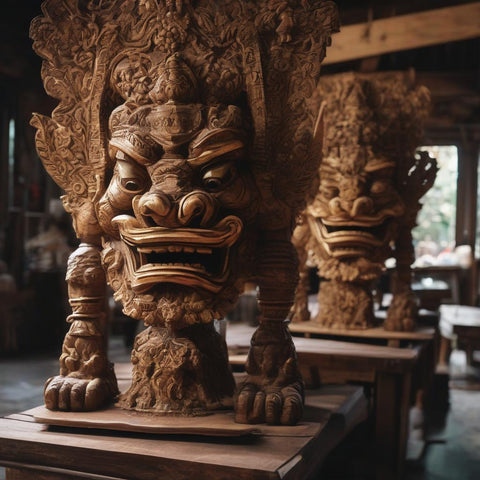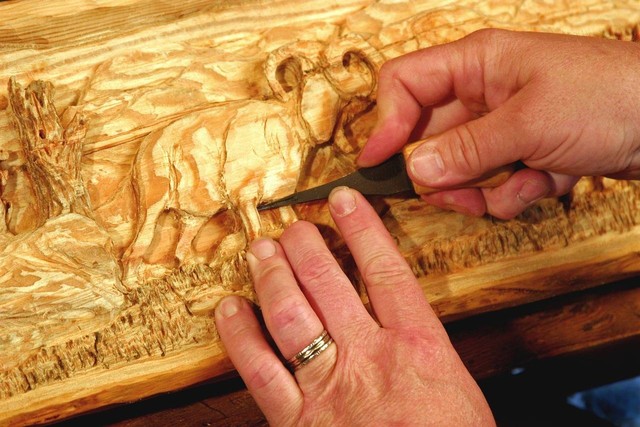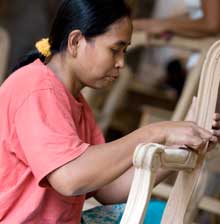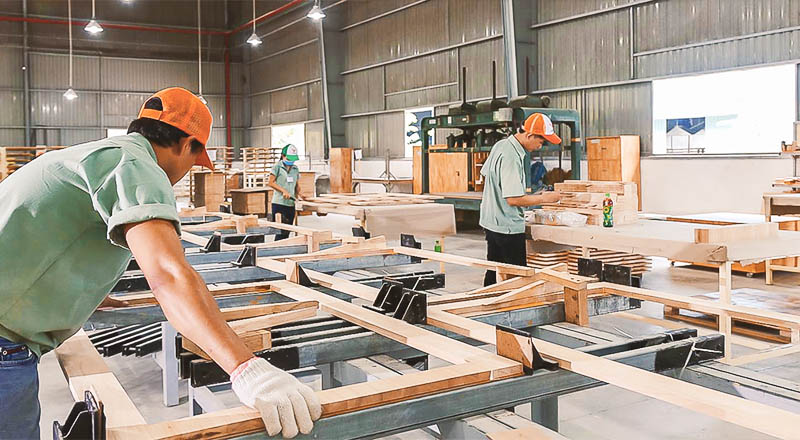Nestled along the northern coast of Central Java, Indonesia, Jepara has become synonymous with high-quality furniture, thanks in large part to its centuries-old tradition of wood carving. This intricate craftsmanship is not just an artistic skill but a cornerstone of the region’s furniture industry. The tradition of carving in Jepara has shaped the town’s identity, contributing to its recognition as a global leader in handcrafted, ornate furniture.
1. Historical Roots of Carving in Jepara

The art of wood carving in Jepara dates back to the Majapahit Empire in the 13th century when the town was known for its intricate carvings used in decorating religious structures like mosques and palaces. As Jepara became a center for furniture production in the 17th century, the local craftsmen began incorporating their wood carving skills into furniture, particularly using teak wood, which was abundant in the region.
The intricate carvings on furniture became a signature feature of Jepara’s craftsmanship, blending traditional elements with functionality. Over time, this art form evolved, and Jepara’s furniture began to be recognized for its unique blend of beauty and durability, attracting both local and international markets.
2. Unique Techniques in Jepara Carving

Jepara’s wood carving stands out due to the meticulous techniques employed by its artisans. The carvings, often floral, geometric, or featuring mythical creatures, are characterized by their detail and precision. The designs are usually expansive and intricate, covering large surface areas of the furniture, with each piece often taking days or weeks to complete. This dedication to detail is what makes Jepara carvings exceptional in the furniture industry.
The “Jepara-style carving” is perhaps the most iconic, known for its ornate and flowing designs. This style is used in everything from large cabinets to tables and chairs, where the carvings are seamlessly integrated into the structure of the furniture. These traditional methods have been passed down through generations, with many artisans learning from older craftsmen or family members.
3. Carving as Cultural Identity

In Jepara, carving is not just a craft; it is an expression of cultural identity. The motifs used in the carvings often carry symbolic meanings—floral patterns can symbolize prosperity, while mythical creatures may represent protection and strength. These symbolic carvings are a reflection of the cultural values and history of Jepara, adding deeper significance to each furniture piece.
Wood carving is integral to Jepara’s cultural identity and the region’s economic success. As a result, Jepara has built a reputation for producing high-quality, artistically significant furniture that distinguishes it from other furniture-producing regions globally. The art of carving has become a key driver of the local economy, with artisans and workers finding employment in the booming furniture industry.
4. Modern Influence on Carving Techniques

While traditional hand-carving remains the backbone of Jepara’s furniture industry, modern technology has influenced how carvings are applied in contemporary designs. Many artisans now use computer-aided design (CAD) software and CNC (computer numerical control) machines to create precise and intricate carvings with greater speed and accuracy. However, many still prefer traditional hand-carving methods to preserve the authenticity and uniqueness of the designs.
Contemporary furniture from Jepara often combines traditional carvings with more minimalist or modern designs, appealing to a broader consumer base. These modern influences help Jepara’s furniture cater to global market trends while maintaining the region’s legacy of craftsmanship.
5. Jepara Carving in the Global Market

The global demand for Jepara’s carved furniture has steadily increased over the years. Furniture from Jepara is particularly sought after in Europe, the United States, and Japan, where the intricate designs and high-quality craftsmanship are highly valued. The reputation of Jepara as a furniture hub is built on the artistry and durability of its carved furniture, making it a symbol of luxury and craftsmanship in the global market.
The growing international recognition of Jepara’s furniture has led to efforts to preserve and promote the region’s carving tradition. As more consumers seek unique, handmade furniture with cultural significance, Jepara’s artisans continue to play an important role in the global furniture market.
Conclusion
Carving is an integral part of Jepara’s furniture industry, giving each piece a unique blend of artistry and functionality. The rich history and tradition of carving in Jepara have established the region as a global leader in handcrafted furniture. While modern technologies have influenced the industry, traditional carving techniques remain at the heart of Jepara’s craftsmanship, preserving the cultural heritage that makes the region’s furniture so distinctive. As Jepara continues to evolve, its carved furniture will remain a symbol of the town’s enduring legacy in the global marketplace.


